
Recommended for such people
・ I want to see something amazing
・ I want to know people who were active in the world more than 100 years ago
What is Makuzu Museum?
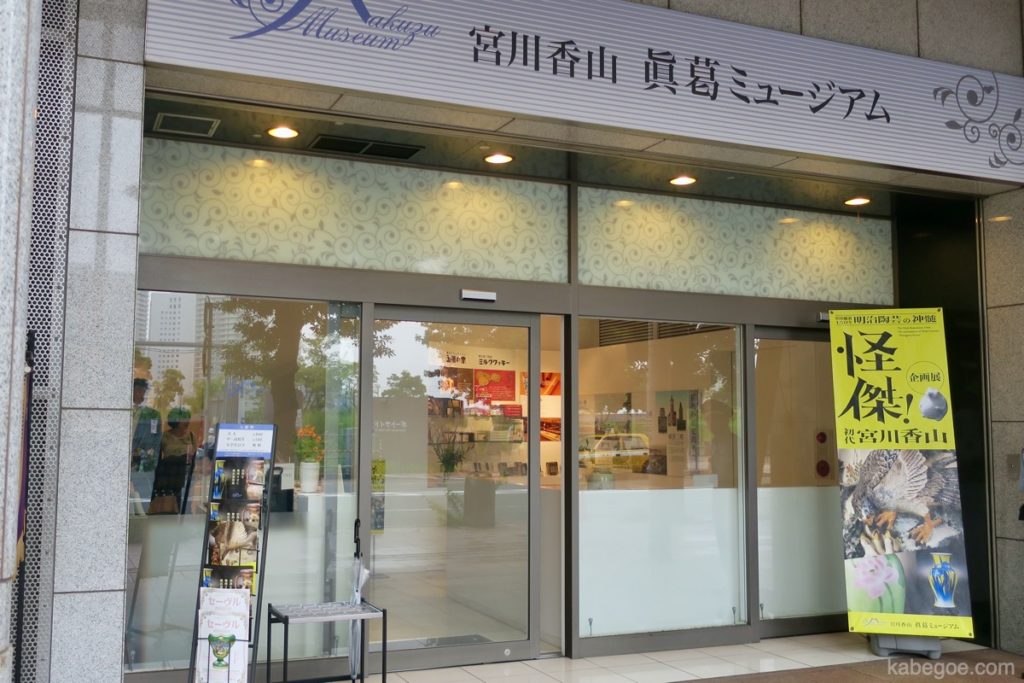
Makutsu Museum is a ceramic museum located in Kanagawa Prefecture.
When I hear about pottery, I think many people have the impression that it is difficult to understand what is good.
I used to have the same impression, but when I first saw Makuzuyaki,
"Ceramic art can be expressed so far !? Is it really something that is more than 100 years old?"
I was shocked.
I would like to introduce the charm of Makuzu-yaki, which changed my image of pottery.
What is Makuzuyaki?
High embossing

High embossing is a technique for expressing a modeled object in three dimensions, and it is embossed as much as "this kind of ant !?".
The size of pottery changes when it is baked, and it is not known whether the glaze (the one to be colored) will be beautifully colored until it is baked.
The high embossing made by perfect calculation succeeds in expressing overwhelming reality like no other.
Exhibited at the World Expo
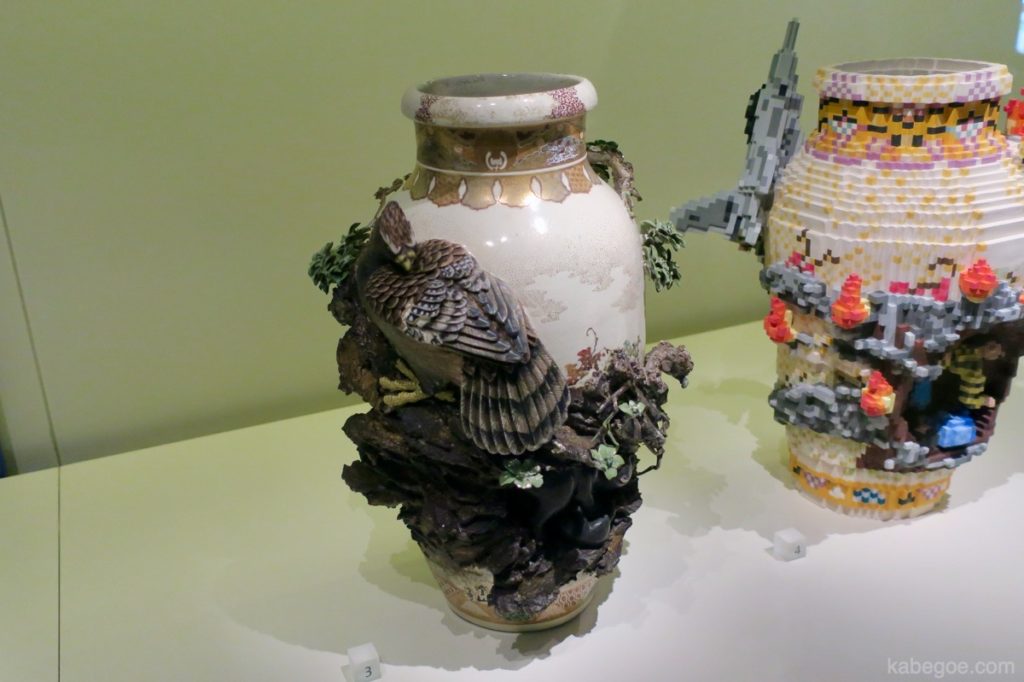
When Makuzuyaki (highly embossed) was exhibited at the 1876 Philadelphia World Exposition, it was praised all over the world as "I have never seen this!".
At the subsequent World's Fair, gold medal was repeated almost every year, and the name of Makuzuyaki became immovable.
It is still exhibited in museums overseas, and I am happy to find it.
(By the way, it was explained that the Lego block on the side of the photo was inspired by Makuzuyaki.)
Until Makatsuyaki is made
The person who created Makatsuyaki was Miyagawa Kozan.
It's a dull history, but the Meiji era when Makuzu Kozan lived was an era when the government bought overseas technology to promote modernization.
To pay for it, we exported a large amount of Satsuma ware (a golden ware that foreigners like).
However, it takes a lot of money to make Satsuma ware, and Makuzu Kozan, who thought that "Japanese gold would flow overseas as it is," created a new technique called high embossing.
To the phantom pottery
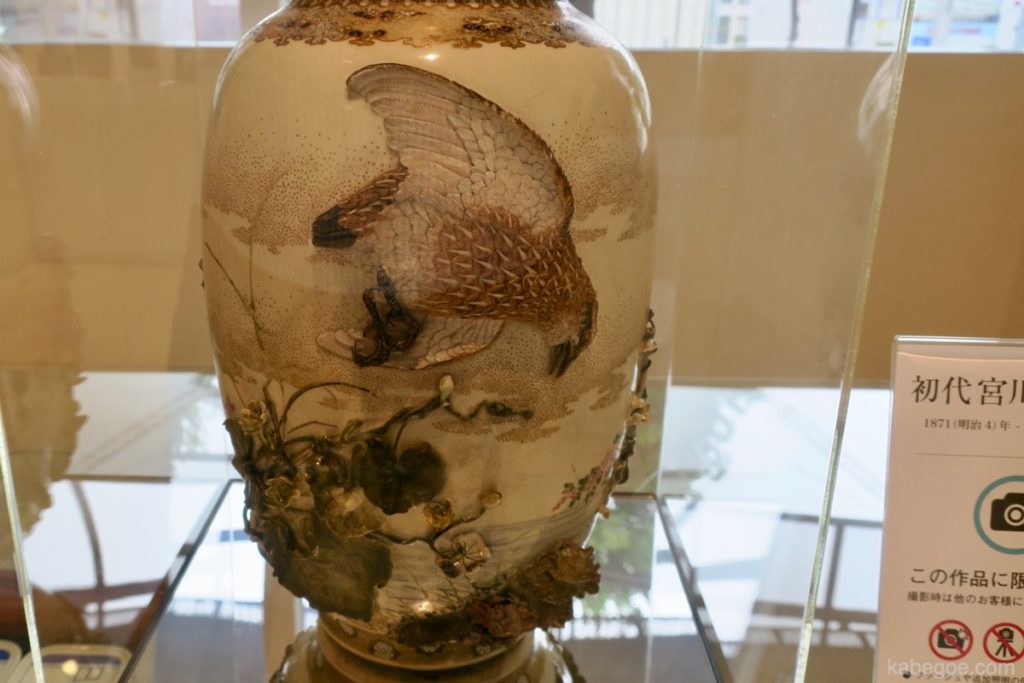
The name of Makuzu Kozan itself was inherited until the 4th generation, but no successor who could reproduce the high embossing of the first Makuzu Kozan (1842-1916) did not appear.
Moreover, the kiln itself was burnt down in the 1945 bombing of Yokohama, and since it was originally made for export, Makuzu-yaki hardly remained in Japan.
Such "Phantom potteryThe Makuzu Museum is where you can buy back Makuzu-yaki from overseas and display it in Japan.
Thank you.
The charm of Makuzu Kozan
Next, I would like to introduce the charm of Miyagawa Kozan, the founder of Makatsuyaki.
Already a master craftsman at the age of 25
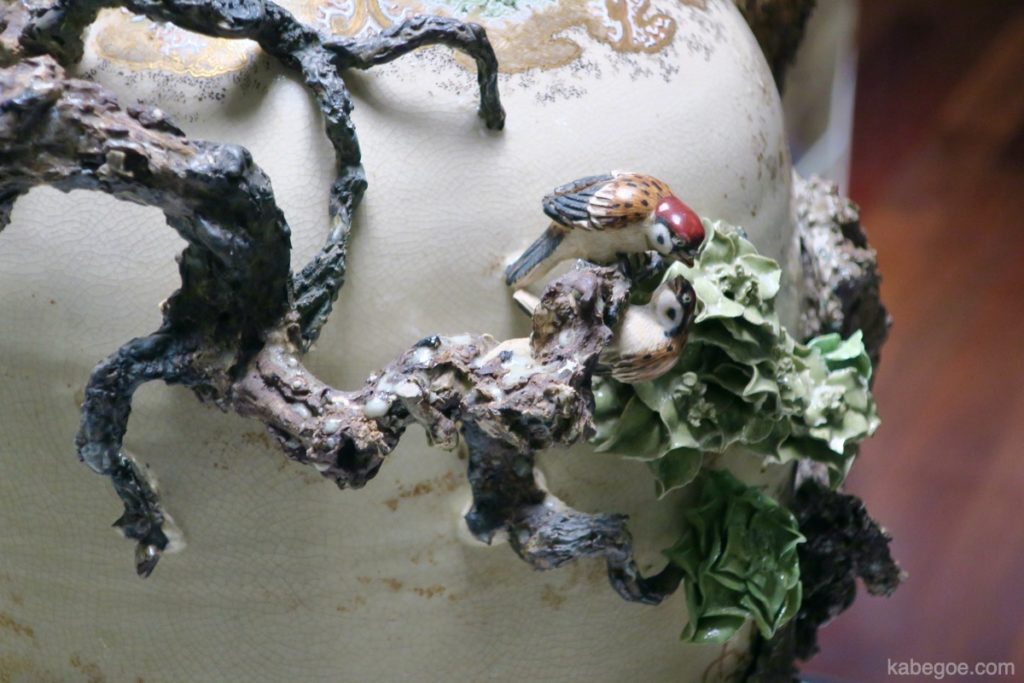
Makuzu Kozan was born in 1842 as the son of a potter.
He emerged from a young age, and by the time he was 25, he was asked by the shogunate at that time to offer items for the Imperial Palace (such as the emperor).
It is said that his skills as a potter were almost complete at this point.
Overwhelming reality
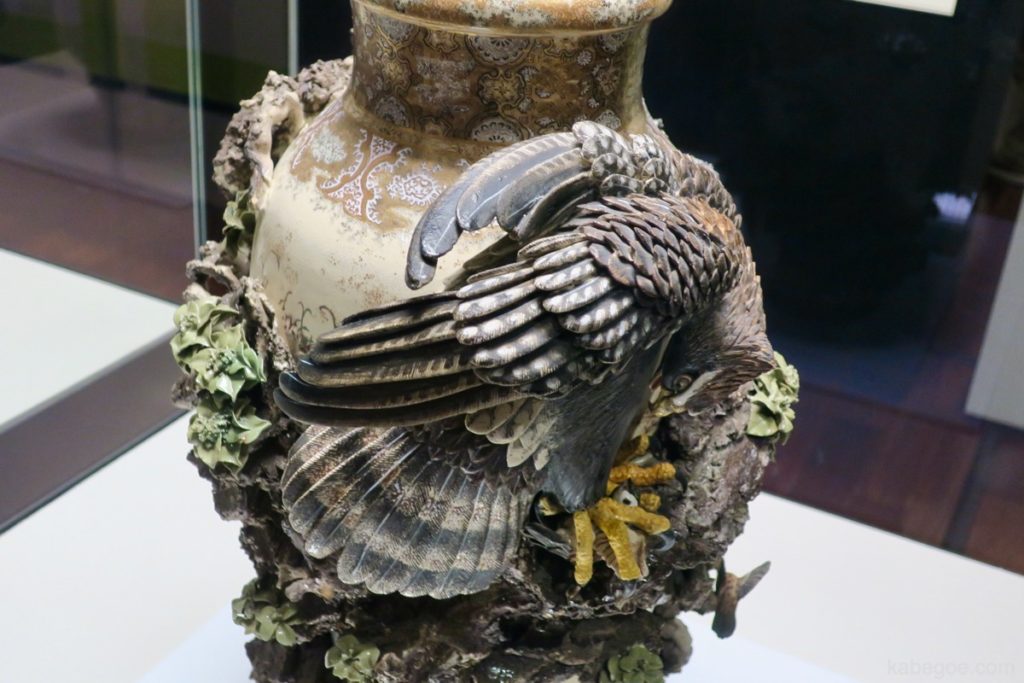
Makuzu Kozan was very enthusiastic about his research, and even kept hawks and bears at home to pursue realism.
(Is it possible to keep a bear individually?)
In particular, the expressive power of hawks is tremendous, giving off energy that cannot be thought of as being made over 100 years ago.
The remaining material says, "If you don't like the roasting, you'll break it from one end to the other, and you'll have a very strong personality."
Expressiveness that no one can imitate
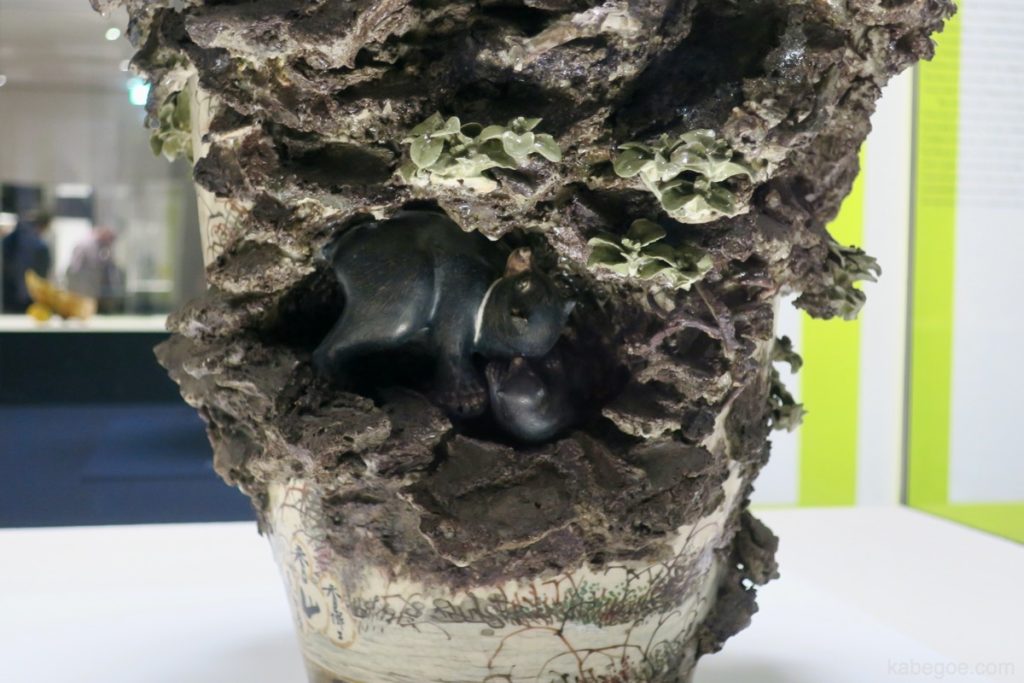
Its expressive power cannot be reproduced even in modern times, and it is completely lost technology.
I tried to reproduce it in the planning of a TV program, but it was concluded that "this is impossible, isn't it?"
Lifelong active
Although Makuzu Kozan gained both status and honor, he will continue to evolve throughout his life.
Since his 40s, he has focused on researching underglaze (coloring), and in his later years he has also created works that combine the techniques of high embossing and underglaze.
I continued to make works until just before I died at the age of 75, and lived a very active life.
The works of those later years are also exhibited at the Makuzu Museum, so it is a must-see.
Admission fee and time required
Ticket price isFee * Adult: 800yen.
The time required is a small museum30It's about a minute.
Opening date and time
Please note that the museum is open only on Saturdays and Sundays.
Even on weekdays, if you make a reservation for 10 people or more 2 weeks in advance, it may open.
Usage Guide: Makoto Museum Official Website
Access
It is about 10 minutes on foot from Yokohama Station.
Be careful not to overlook it as it is a single tenant, not an independent building.
Finally
Makuzu Kozan is my favorite potter.
I think that he is a person who believes in the potential of ceramic art more than anyone else and thinks about the person who appreciates the work more than anyone else.
Otherwise, you won't be able to build something at this level.
The Makuzu Museum is a museum that I can really recommend to those who see ceramics for the first time.
Please experience the real polar regions that can only be reached by humans who have dedicated their lives to one thing.
Related information
Kiyomizu Sannenzaka Museum (Kyoto)
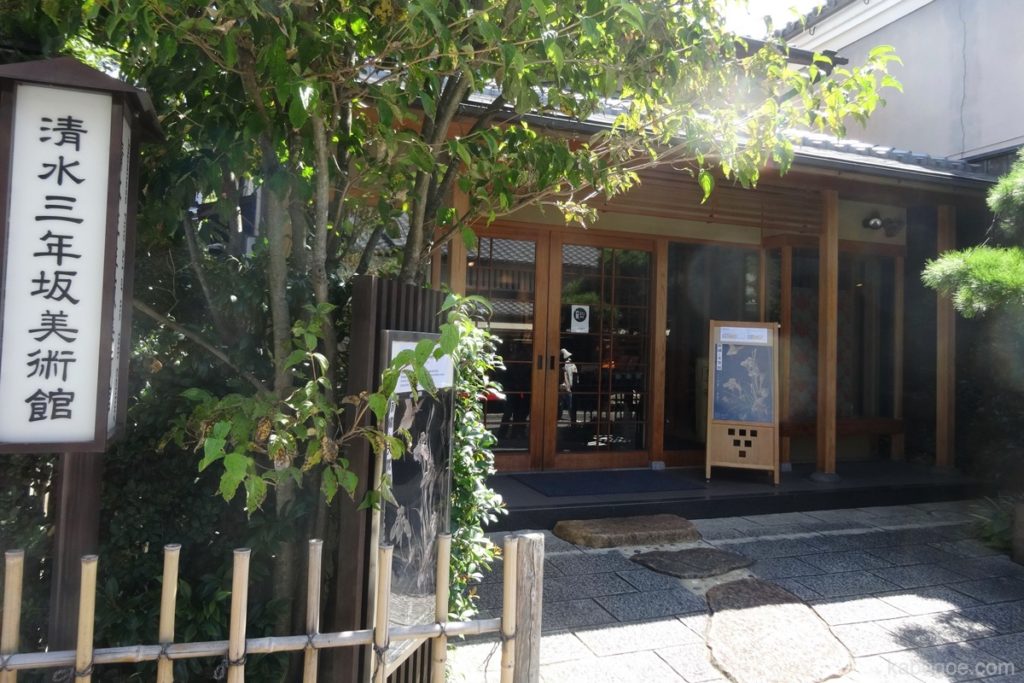
An art museum in Kyoto that exhibits Meiji crafts.
In the world of Meiji crafts, there are many master craftsmen similar to Makuzu Kozan.
However, because it was the best in the world, there are no works left in Japan and it is not well known in most cases.
This Kiyomizu Sannenzaka Museum is also an art museum that the director bought back and founded overseas after being impressed by "Is there such a wonderful work of art in old Japan?"
It's far from Kanagawa prefecture, but please visit it when you go to Kyoto.
It is very close to Kiyomizu Temple.